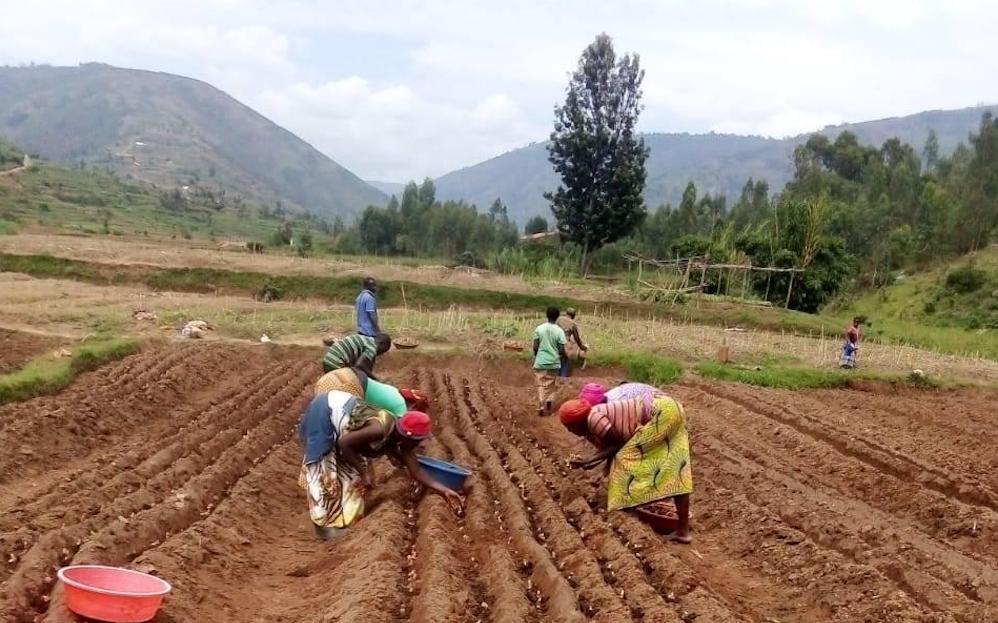Lauren Nkuranga didn’t bank on becoming a spice farmer when she launched Get It in Rwanda in 2014. Her idea was simply to make it easier for households like her own to order groceries for delivery online. But over the past seven years, Nkuranga has experienced the full range of food production and distribution challenges in the small central African country.
“As we built our infrastructure, we realized that we can’t focus on one piece of the supply chain in a market like Rwanda,” Nkuranga tells AFN.
Get It’s long-term mission is to take on the whole thing.
Retail to commercial
In its original iteration, Get It was a grocery delivery startup. Customers could send a list of groceries via SMS to the company, and Get It physically handled the collection and delivery of those goods around Rwanda’s capital Kigali, a city of over 850,000 people. Nkuranga, being the only employee at the time, delivered more than 500 orders herself.
“Today, grocery delivery feels like a totally normal thing,” says Nkuranga. “But seven years ago, it was really new.”
An order from a restaurant prompted Get It’s first business pivot. The newly-opened restaurant placed an order for fruits and vegetables with the startup, which was a lightbulb moment for Nkuranga. She says there weren’t really any commercial distributors catering to restaurants or hotels at the time.
Get It moved into commercial food distribution in 2017. Within two years, it had become the largest food distributor in the country, supplying more than 100 types of fresh produce, as well as seafood, dairy, dry goods, and items such as cleaning supplies.
Its clientele is centered around Rwanda’s tourism and hospitality industries, including high-end restaurants, hotel chains like Marriott International, and national airline RwandAir.
Farmer support
To meet the demands of commercial customers, Get It partners with up to 50 out-growers, who manage farms that range in size from half a hectare up to 200 hectares. It aggregates produce from these partners into an ISO 22000 food safety-certified, refrigerated packhouse that runs on off-grid energy.
But ensuring a consistent, high-quality supply of food was a challenge in the early days of Get Its’ shift to commercial distribution, says Nkuranga. The company depends on its out-grower partners for 90% of its produce supply; they needed support to produce at the capacity Get It required.
The startup works with a team of agronomists to provide training on farming practices, such as minimizing post-harvest losses. It also partners with the Rwandan Ministry of Agriculture to source high quality seeds for farmers. It then offers reliable off-take agreements and pays premium rates to farmers for their goods, helping them to maintain consistency in the quality and quantity they produce.
As a result, the out-growers have increased both production capacity and employment on their farms. Some have moved from subsistence farming into commercial operations because of their contracts with, and support from, Get It. Others have been able to buy more land to expand their operations. Collectively, they are also growing a wider variety of fruits and vegetables.
“We look at our out-growers the way we look at our customers,” says Nkuranga. This approach, she adds, has helped the company forge strong relationships and high retention levels with its out-grower partners.
Becoming a farmer
While Get It is able to source most of its in-demand goods through its out-grower network, spices presented a challenge in terms of supply consistency. Get It’s solution was unconventional: it set up its own farm to grow chillies, turmeric, garlic, and ginger on 40 hectares of leased land. It now exports its products to India and South Africa.
Investors support its approach. Last July, Get It closed its Series A funding round, which was led by Africa-focused US impact investor VestedWorld.
Finding affordable debt capital has been difficult, however; local interest rates range from 15% to 20% and require 100% collateralization. Also, there are almost no agricultural banks lending to farmers in its network.
On reflection, Nkuranga says building the company in the way she has was necessary in a place like Rwanda.
“With a frontier market comes the challenge of unpredictability,” she says “Creating companies from the ground-up in countries like Rwanda makes a lot more sense than just importing models from abroad, where food distribution is a part of those economies.”
Nkuranga says it took Get It a long time to figure out how to pull together all of the pieces of the food production, manufacturing, and distribution chain.
“Just finding the equipment, the chemicals, the things kitting out the warehouse, access to regular testing, water, access to electricity – all of those things are difficult in a developed market, [let alone] a frontier market,” she adds. “We are the first people here to do this level of thinking, and we’ve had to figure that all out from scratch.”




